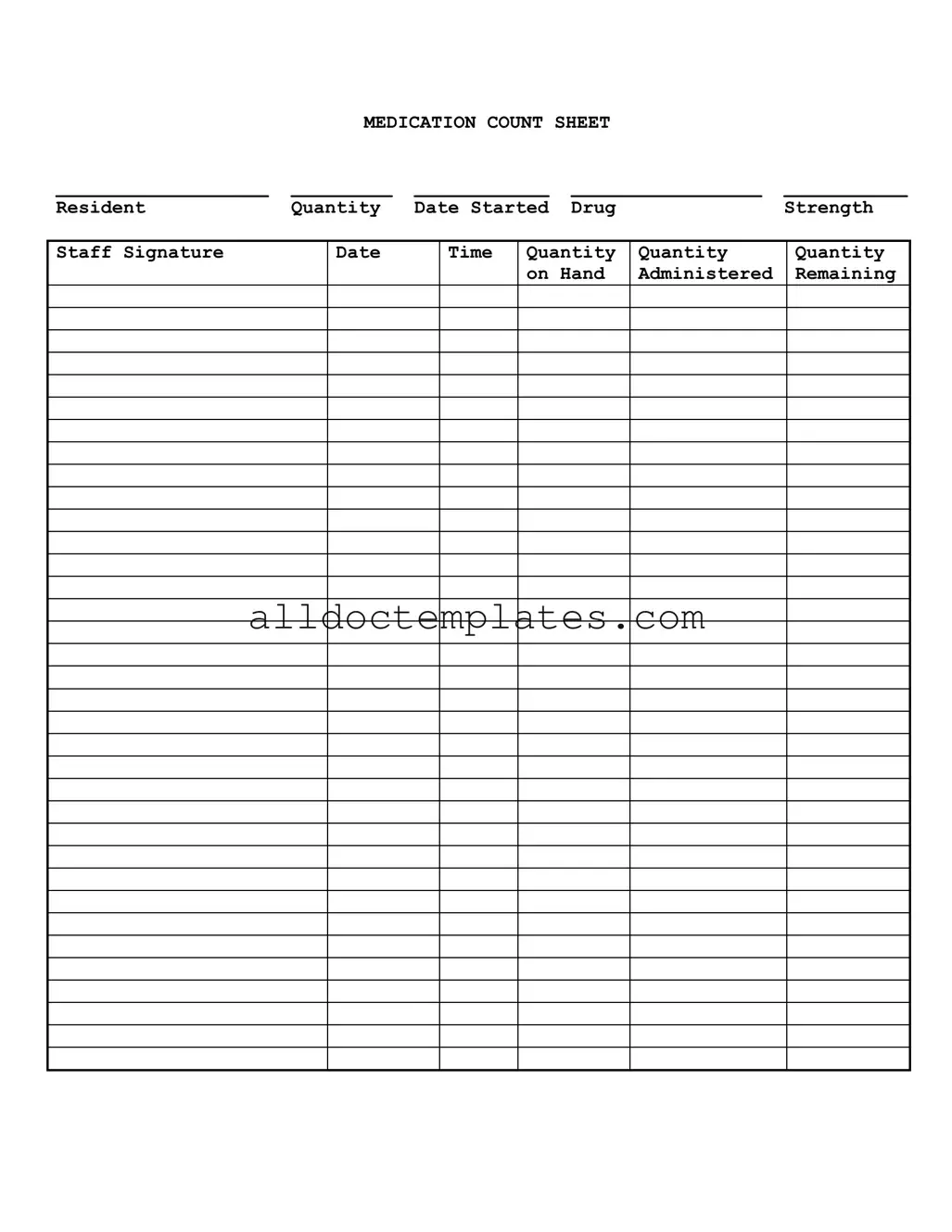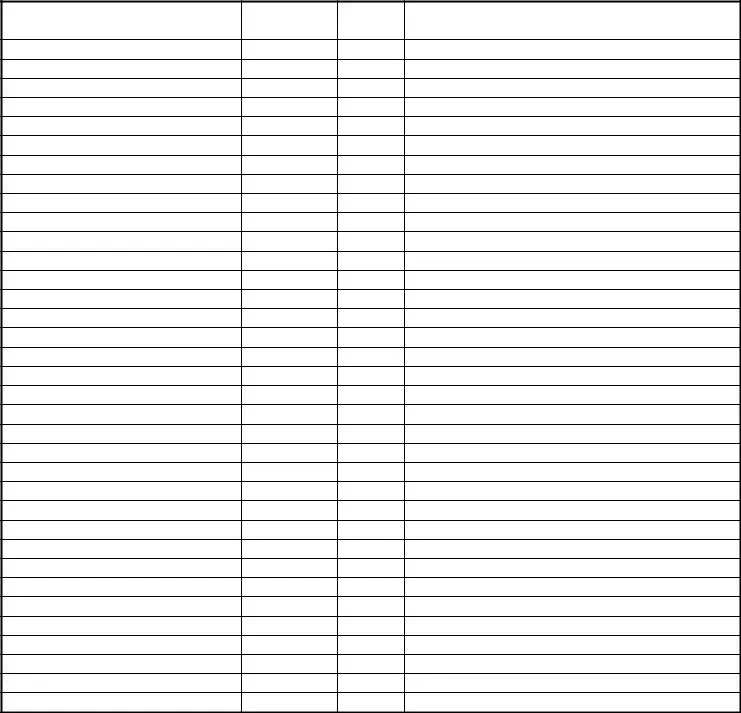Fill in a Valid Medication Count Sheet Form
The Medication Count Sheet is a crucial document used in healthcare settings to track the administration and inventory of medications. This form includes essential details such as the resident's name, drug strength, quantity administered, and the remaining quantity on hand. Proper use of the Medication Count Sheet helps ensure accurate medication management and accountability among staff members.
Get Your Form Now

